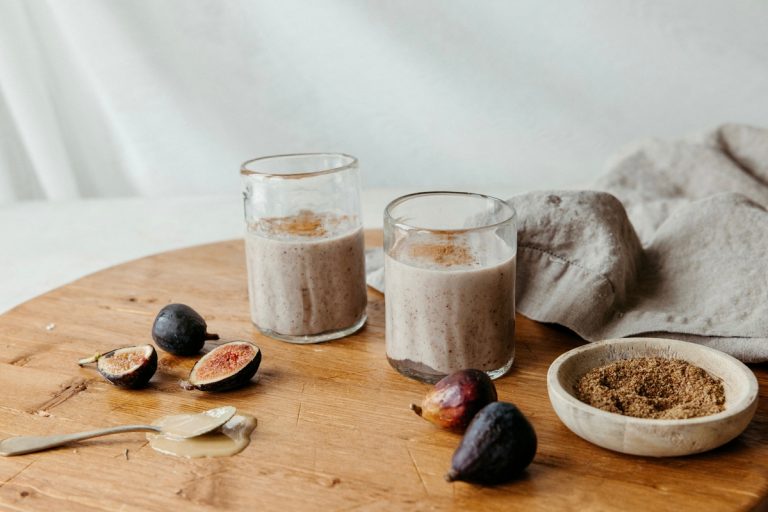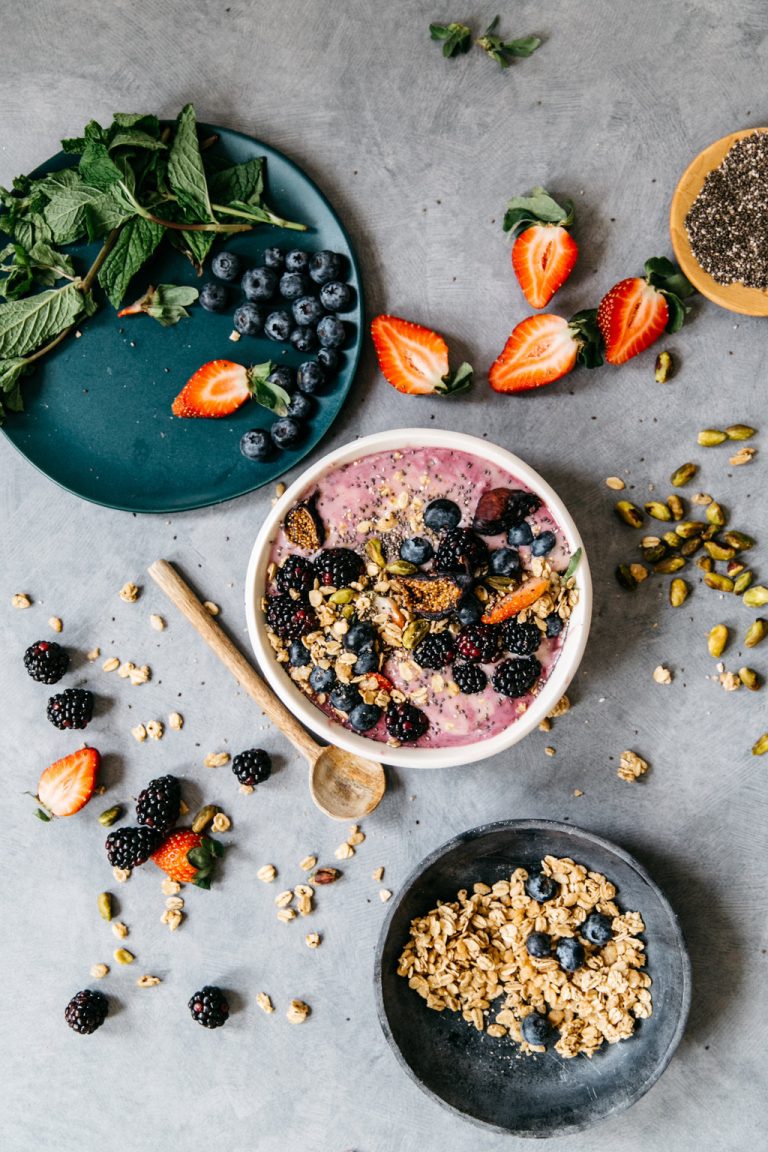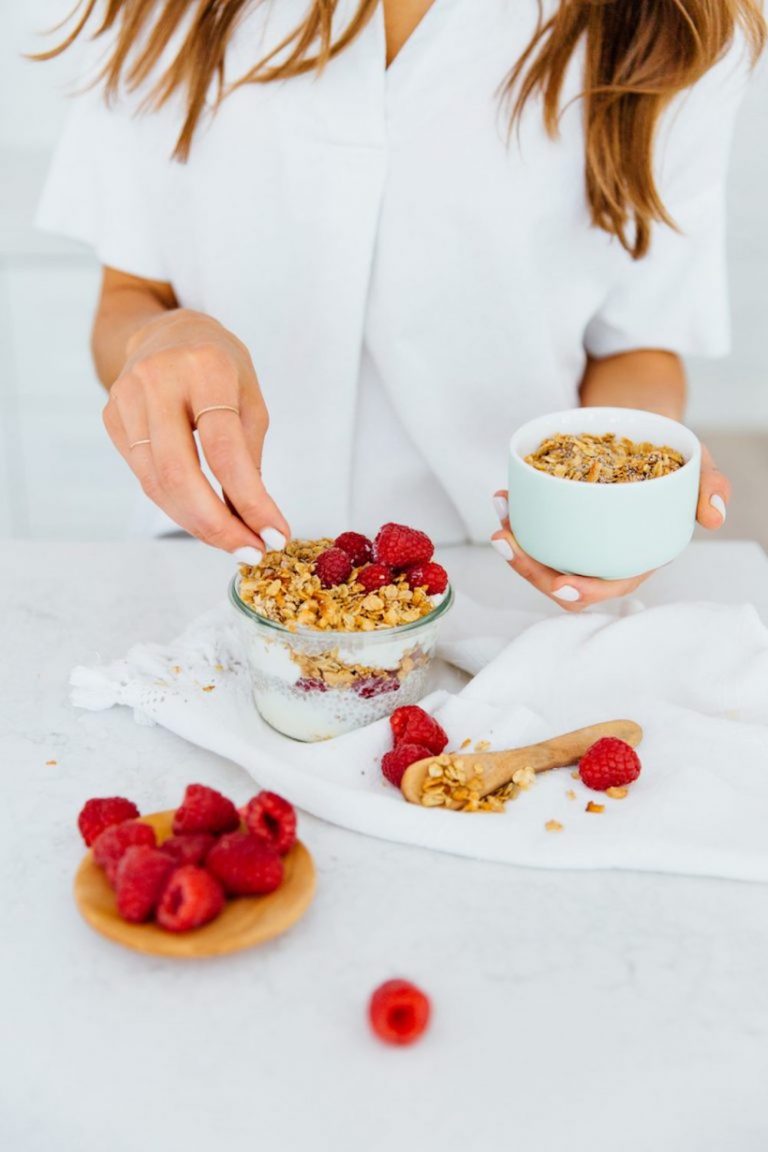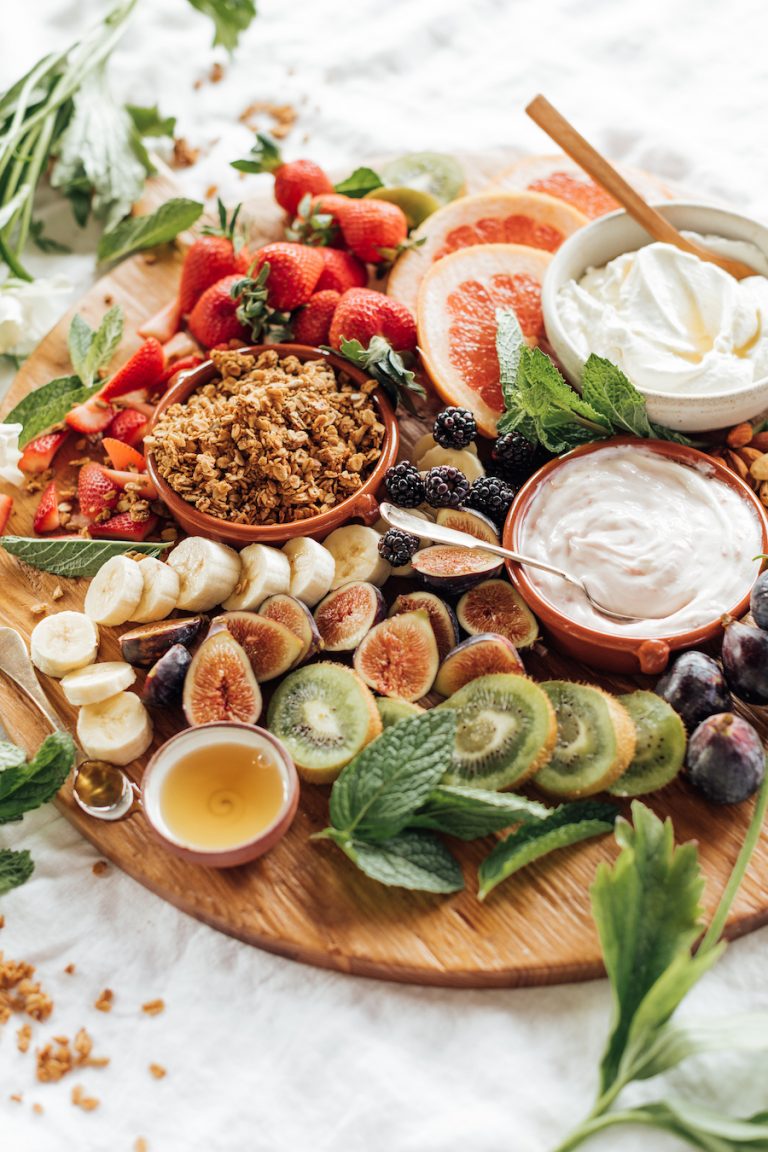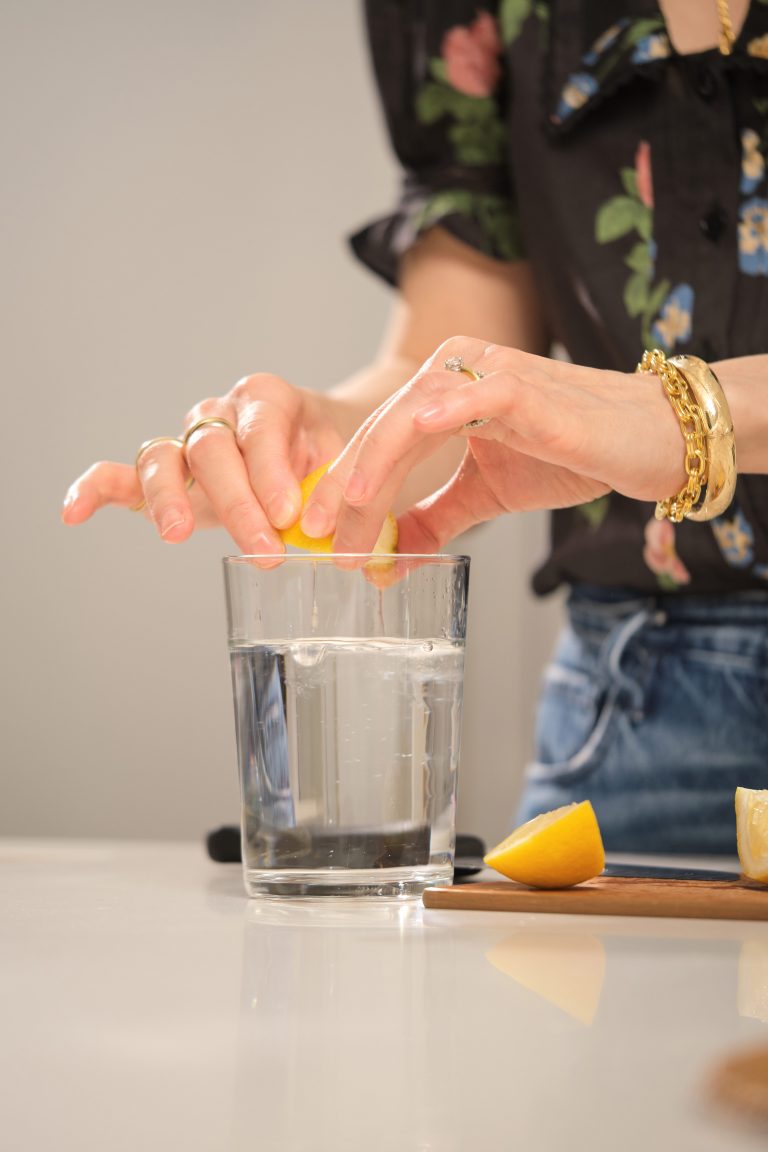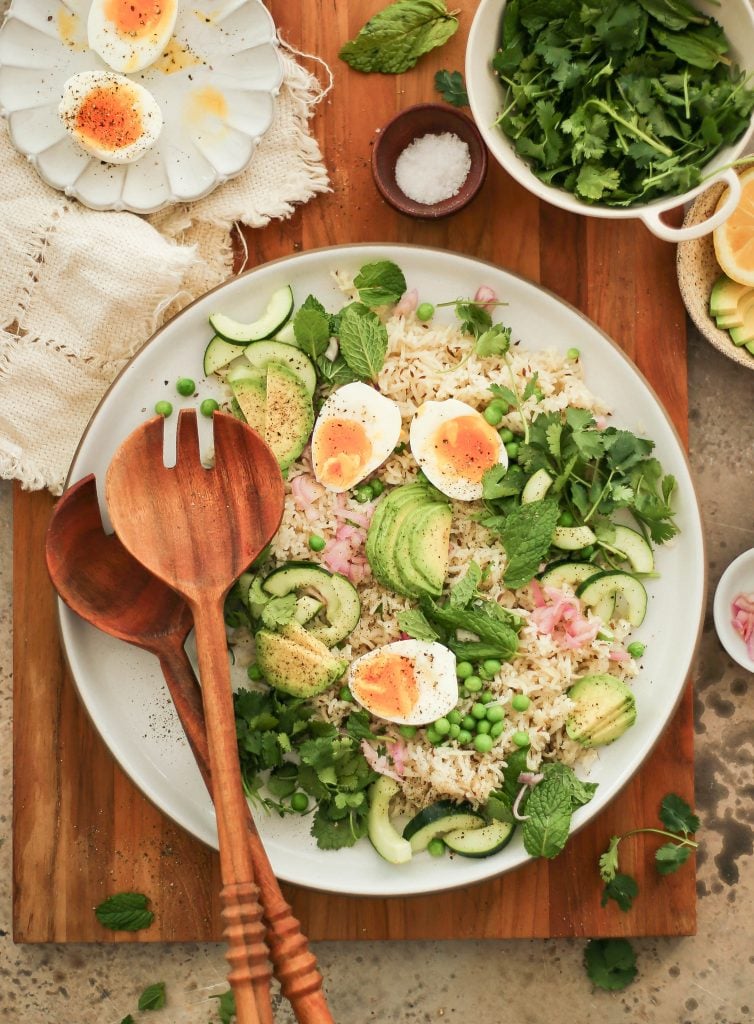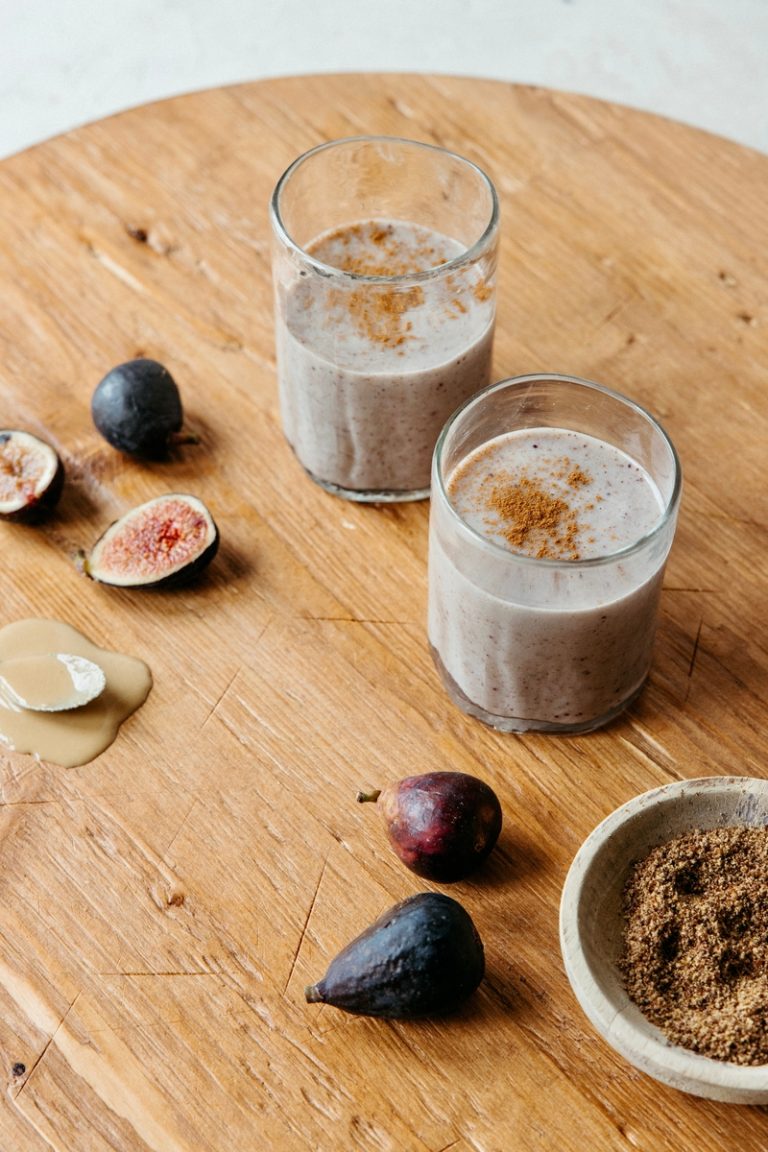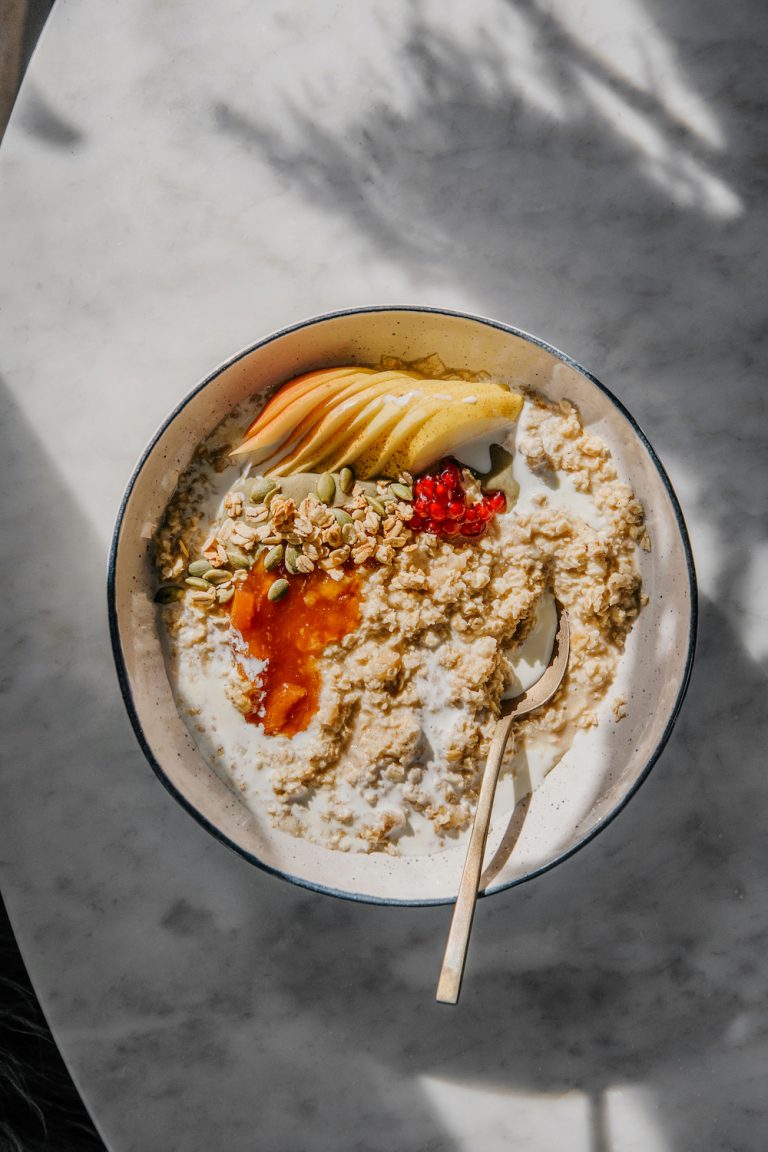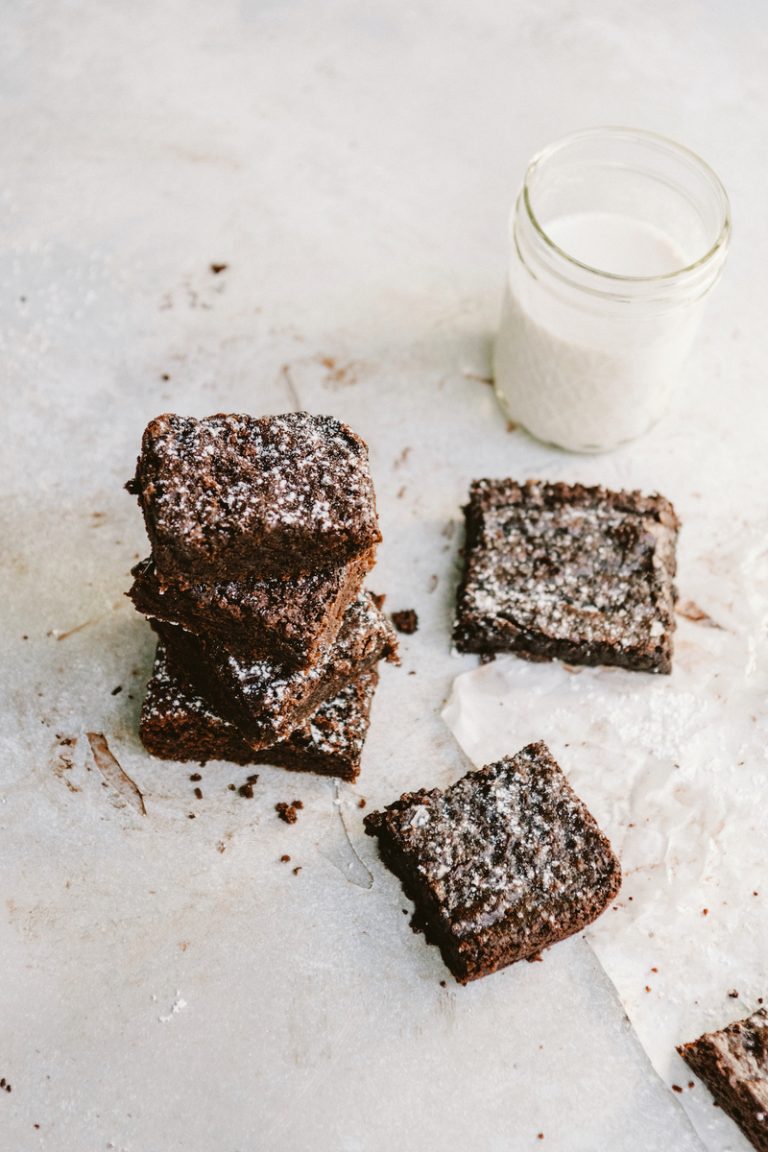Temp check: how are your New Year’s intentions coming along? Whether you’re steadfast on the path of (least) resilience, or goal-setting isn’t on your radar, allow this to be an open invitation—a gentle pulse on your well-being. Maybe you vowed to eat more balanced this year. Or, perhaps you set a goal to move your body more consistently to support your hormones. No matter your intentions, we’re here to cheer you on. In the spirit of habit stacking, we have a simple hack to add to your wellness repertoire: seeds. The two most popular are on tap today—flax seeds vs chia seeds.
Get the rundown on both, including their similarities, differences, and key benefits. Spoiler alert: you’ll want to stock a bag of each in your fridge.
Featured image by Michelle Nash.

Subscribe
Sleep well.
Sign up to receive a FREE E-BOOK with 12 steps to your best sleep ever.
Thanks for Signing Up!
Oops!
Looks like you’re already signed up or your email address is invalid.
Oops!
Looks like you unsubscribed before click here to resubscribe.
Flax vs Chia: The 411
First and foremost, they’re nutritional powerhouses. Besides being a great source of fiber, both chia and flax are rich in protein and healthy fats. However, they have their differences. For starters, chia seeds are round and tiny. Most are black, but some are white (black have slightly more protein, whereas white chia seeds have a bit more fat). They have a distinctly mild yet earthy taste. Historic evidence traces chia back to the Aztecs! Flax, on the other hand, was domesticated in the Middle East. Its seeds are most often ground and have a nutty flavor. Whole flax seeds are shiny and brown.
Chia Seeds Nutrition
Let’s start with chia. Despite their tiny size, chia seeds are highly nutritious. They’re packed with fiber, protein, omega-3 fatty acids, and various micronutrients. In a single serving (two tablespoons), chia seeds provide:
- calories: 138
- protein: 4.7 grams
- fat: 8.7 grams
- alpha-linolenic acid (ALA): 5 grams
- carbs: 11.9 grams
- fiber: 9.8 grams
- calcium: 14% of the Daily Value (DV)
- iron: 12% of the DV
- magnesium: 23% of the DV
- phosphorus: 20% of the DV
- zinc: 12% of the DV
- vitamin B1 (thiamine): 15% of the DV
- vitamin B3 (niacin): 16% of the DV
Health Benefits of Chia Seeds
Know this: they’re more than just a TikTok trend.
- Excellent source of antioxidants. Chia’s antioxidants not only protect the sensitive fats in their seeds from going rancid, but they also benefit our health. Chia seeds may have protective effects on your heart, liver, and more.
- Can help balance blood sugar. Chia seeds are a superfood for diabetics and those with hormone imbalances, like PCOS. In fact, studies show a fiber-rich diet may help reduce insulin resistance and improve blood sugar levels.
- May aid in weight loss. Though adding chia seeds to your diet is unlikely to cause weight loss on its own, it may be a useful addition to a balanced, nutritious diet if you’re trying to lose weight.
- Contain bone-supporting nutrients. With their magnesium and phosphorus, chia seeds are vital for bone health. In fact, a single ounce of the seeds also contains 18% of your recommended daily allowance of calcium.
- Improve digestion. Because they create a gelatinous effect when added to liquid, they can help cleanse your gut by collecting toxins on their way out. If you have an inflammatory bowel condition, like IBS or Crohn’s, speak with your healthcare provider before adding chia seeds to your diet. Because of their high fiber content, eating too many chia seeds may cause constipation, diarrhea, bloating, and gas.
How to Eat Chia Seeds
When in doubt, soak your chia seeds. Meaning, add them to smoothies, overnight oats, a bowl of cereal, oatmeal, yogurt bowls, parfaits, etc. Of course, chia pudding is probably the most popular way to eat them. This allows the chia seeds to work their magic—aka, turn gelatinous. You can certainly sprinkle them on top of your salads, toasts, and power bowls, but by soaking them you activate their most nutritional properties.
Flax Seeds Nutrition
Tiny but mighty, flax seeds are nutritionally-dense. In a single serving (two tablespoons), flax seeds provide:
- Calories: 74
- Carbs: 4 grams
- Fat: 6 grams
- Fiber: 2 grams
- Protein: 2.6 grams
- Thiamine: 20% of the Daily Value (DV)
- Copper: 18% of the DV
- Manganese: 16% of the DV
- Magnesium: 14% of the DV
- Phosphorus: 8% of the DV
- Selenium: 6% of the DV
- Zinc: 6% of the DV
- Vitamin B6: 4% of the DV
- Iron: 4% of the DV
- Folate: 4% of the DV
Health Benefits of Flax Seeds
Like chia seeds, flax seeds have a variety of benefits.
- Improve digestion. Flax seed can help with digestive issues like constipation, thanks to its high-fiber content. Flax contains both soluble and insoluble fiber, a win-win. Ground flax seed aids in satiation while keeping food moving smoothly through the digestive tract.
- Lower cholesterol levels. Flax seed is linked to lowering levels of low-density lipoprotein (LDL, or “bad”) cholesterol, which means it can help prevent other health issues such as heart disease and stroke. As a whole, flax seed is rich in ALA, a type of omega-3 fatty acid, that is known to support overall heart health.
- Aid in weight management. Mainly, this is because of its soluble fiber, which slows digestion and increases feelings of fullness. In fact, a large review of 45 studies found that supplementing with flax seed resulted in significant reductions in body weight, BMI, and belly fat.
- Support insulin sensitivity. Insulin resistance—or an inability to effectively use the hormone insulin—is the hallmark of type 2 diabetes. Some research suggests that flax seed oil can help improve insulin sensitivity.
- Balance hormones. Do you struggle with PMS or are you estrogen dominant? If so, ground flax is remarkably helpful. Flax is known to help balance hormones, hence why it’s included in the practice of monthly seed cycling. Basically, its insoluble fibers bind to estrogen, helping shuttle them out of the body. This helps reduce or prevent those “estrogen-dominant” symptoms.
- Boost skin and hair health. The essential fatty acids in flax seed oil are known to keep skin moisturized and hydrated. With that comes a reduction in the appearance of wrinkles and other aging signs. This multitasking, anti-inflammatory oil can be applied to the skin to soothe irritations or soften roughness.
How to Eat Flax Seeds
Long before flax was the super seed we know it as today, it had a variety of uses. Think: flax linen and textiles. Eventually, you’d only find flax in breads and cereals. Nowadays, it’s a staple in the nutrition world. In many ways, it’s developed a cult following. Of its many uses, flax can be turned into a vegan egg replacement when baking, sprinkled on yogurt parfaits, and added to energy bites. Beyond culinary uses, it’s also a fantastic supplement to balance hormones and reduce inflammation.
Should you eat flax seeds ground or whole?
If you’ve ever shopped for flax seeds, you’ve probably seen both at the store: whole and ground. As mentioned, you’ll also find flax seed oil. Whole flax seeds are difficult to crack, even with careful chewing. And if the flax seed passes through the digestive tract unbroken, the body does not receive the full nutritional benefits. Grinding breaks up the seed, making it easier for the body to digest. Therefore, ground flax seed (also known as flax meal) provides more nutritional benefits than whole flax seed.
Want more flax seed recipe inspo? We have a flax seed guide for you!
Can you eat chia and flax seeds every day?
Yes. While there is no specific recommendation for flax or chia intake, 1-2 tablespoons a day is considered a healthy amount. With their versatile textures and mild taste, they bode well in many recipes. Flax, in particular, is one of the seeds you incorporate when seed cycling! This practice helps naturally balance hormones during your follicular phase. Like any high-fiber food, chia and flax can make you feel a bit bloated. I suggest starting with a teaspoon a day and working your way up to two tablespoons.
How to Store Chia and Flax Seeds
Whether you buy your chia and flax seeds whole or ground, it’s best to store them in the fridge or freezer. Just as storing nuts this way extends their shelf life, the same goes for flax seeds (and flax seed meal). In fact, they can last up to one year in the fridge and freezer. If your chia or flax seeds have an “off” smell or flavor, they likely went rancid. Best to compost or toss them.
The Takeaway
With resounding evidence, it’s clear that both chia and flaxseeds are equally healthy. Ultimately, you can’t go wrong. However, chia and flax have slightly different uses, textures, and nutritional profiles. Additionally, you may find that you digest one better than the other. It’s not uncommon to bloat from chia!
Regardless, both are incredible sources of omega-3 fatty acids and fiber. Comparing protein content, chia seeds beat flax. They also have more calcium and iron than flax seeds. Hot tip: pair chia seeds with a good source of vitamin C—like strawberries or citrus—to maximize your iron absorption. That said, if you’re aiming for hormone balance specifically, flax is the way to go.

